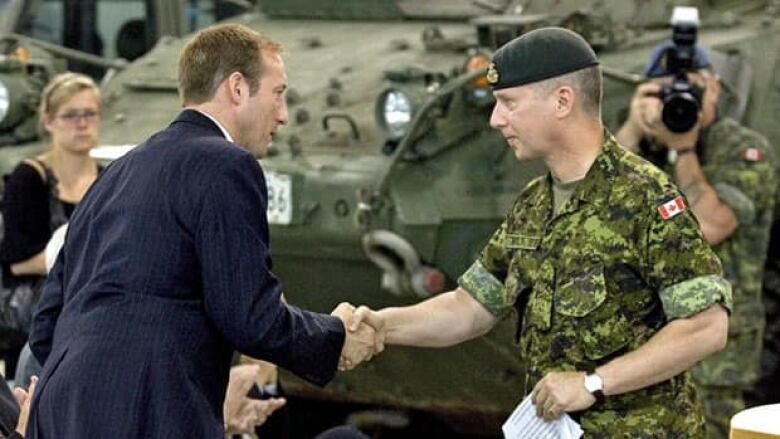Leslie fires back over defence transformation report

Retired general Andrew Leslie defended his controversial transformation report Monday, fielding questions from senators on theupper chamber's defence committee about how to cut costs while avoiding hurting the Canadian Forces.
Leslie said he and his team looked at all previous transformation reports to see what was recommended in the past, what came up repeatedly, and what hadn't even been implemented. They also looked at Canadian allies to see what other countries were doing to deal with tighter budgets.
Leslie said despite a comment by former chief of defence staff Rick Hillier that the recommendations would "destroy" the Canadian Forces, that he wouldn't recommend something he thought would destroy the military, having served almost 35 years.
"[I've] carried a rifle, fought for my country, fought for my troops. I would never recommend anything that would destroy the Canadian Forces," he said.
Leslie cautioned against cutting from the procurement budget, warning those are easy cuts to make but sometimes lead to worse performance a year or two later.
"I would watch like a hawk from this moment forward the monies that are allocated to national procurement," he told the senators. "And if they go down by one cent as compared to last year, I would ask some really hard questions as to why the money is coming out of spare bits and not out of headquarters and overhead."
Between 2004 and 2010 the combined workforce of DND and the Canadian Forces jumped 18 per cent, or by more than 20,000 people. By March 2010, the departments employed 144,744 people, including 67,857 in the regular forces, 35,665 reservists and 29,348 civilians. The number of civilian personnel grew three times faster over that period than did personnel in the regular forces, the report found.
The report makes 43 recommendations, including these key ones:
- Reallocating about 3,500 regular forces personnel into areas identified for future growth or investing the funds elsewhere.
- Reducing by up to 30 per cent the $2.7 billion spent on contractors, consultants and private-sector providers.
- Moving about 3,500 civil servants into higher priority activities or investing the funds elsewhere.
- Moving half the 9,000 full-time reservists back to part-time positions or having them enlist in the regular forces.
Leslie said the work of contractors and consultants is necessary for the Canadian Forces, but they should prioritize those contracts like any other expense. He said cutting 10 per cent of that budget every year for three or four years is possible.
Returning half the full-time reservists is also key, he said.
"Give those 4,500 full-time reservists a choice. You can either go back to part-time service or you can transfer to the regular force or you can seek other career options," Leslie said.
Otherwise, he said, the money equivalent to the funding for 4,500 full-time reservists will come out of spare parts for equipment, capital or infrastructure budgets.
Leslie spent 10 months on the report before retiring last month.












_(720p).jpg)


 OFFICIAL HD MUSIC VIDEO.jpg)
.jpg)



























































































